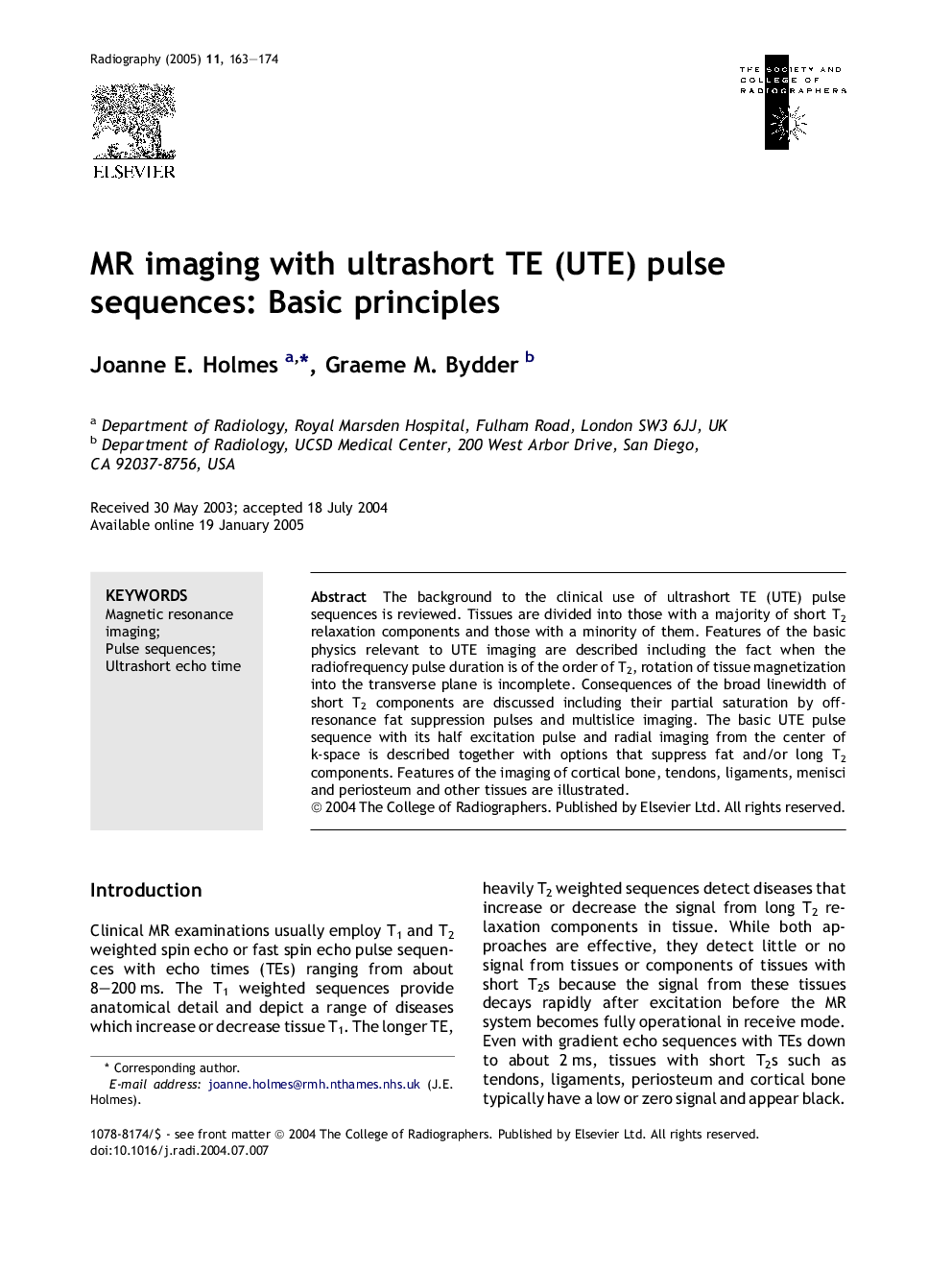| Article ID | Journal | Published Year | Pages | File Type |
|---|---|---|---|---|
| 9088601 | Radiography | 2005 | 12 Pages |
Abstract
The background to the clinical use of ultrashort TE (UTE) pulse sequences is reviewed. Tissues are divided into those with a majority of short T2 relaxation components and those with a minority of them. Features of the basic physics relevant to UTE imaging are described including the fact when the radiofrequency pulse duration is of the order of T2, rotation of tissue magnetization into the transverse plane is incomplete. Consequences of the broad linewidth of short T2 components are discussed including their partial saturation by off-resonance fat suppression pulses and multislice imaging. The basic UTE pulse sequence with its half excitation pulse and radial imaging from the center of k-space is described together with options that suppress fat and/or long T2 components. Features of the imaging of cortical bone, tendons, ligaments, menisci and periosteum and other tissues are illustrated.
Related Topics
Health Sciences
Medicine and Dentistry
Radiology and Imaging
Authors
Joanne E. Holmes, Graeme M. Bydder,
